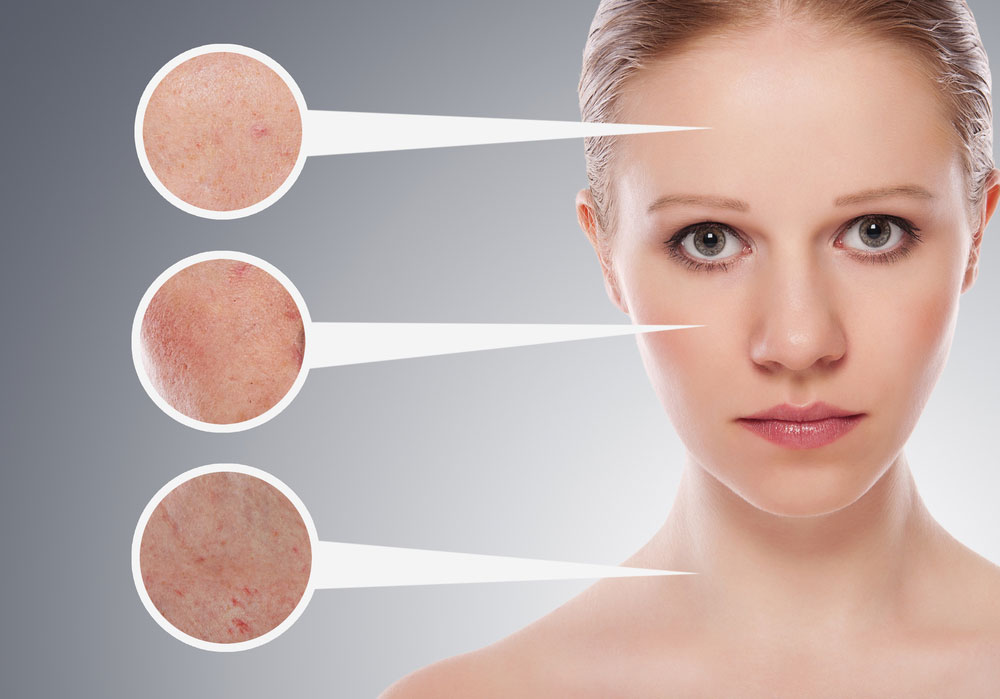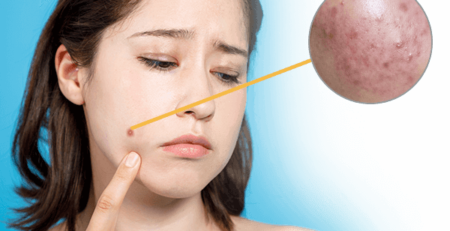Causes of skin problem
- Dry Skin: Dry skin is an uncomfortable condition marked by scaling, itching, and cracking. It can occur for a variety of reasons. You might have naturally dry skin. But even if your skin tends to be oily, you can develop dry skin from time to time. Dry skin can develop on any part of your body. It’s most likely to affect your hands, arms, and legs. In many cases, lifestyle changes and over-the-counter moisturizers may be all you need to treat it. Exposure to dry weather conditions, hot water, and certain chemicals can cause your skin to dry out.
Dry Skin:
As you age, your sweat and oil glands don’t produce as much moisture. You may develop dry skin on your legs, elbows, arms or other parts of your body. Treatments can provide relief. Dry skin is skin that doesn’t have enough moisture in it to keep it feeling soft and supple. People with dry skin may have rough-feeling patches that flake off or look scaly. It may or may not be itchy. Severe dry skin may crack and bleed. Dry skin is a common condition that affects people of all ages. People who live in dry climates, work outside or wash their hands frequently get dry skin.
- Oily Skin: Oily skin is the result of the overproduction of sebum from sebaceous glands. These glands are located under the skin’s surface. Sebum is an oily substance made of fats. Sebum isn’t all bad since it helps protect and moisturize your skin and keep your hair shiny and healthy. Too much sebum, however, may lead to oily skin, which can lead to clogged pores and acne. Genetics, hormone changes, or even stress may increase sebum production.
Oily Skin:
Acne skin:
Here are some facts about acne. More detail is in the main article.
Melasma Skin:
Brownish colored patches usually appear on the:
- cheeks
- forehead
- bridge of the nose
- chin
It can also occur on the neck and forearms. The skin discoloration doesn’t do any physical harm, but you may feel self-conscious about the way it looks.
- Pores, Wrinkles, Freckles Skin:
Pores, Wrinkles, Freckles Skin:
Pores: Pores are the small openings at the top of our hair follicles that cover the entire body. Our pores release sebum, our body’s natural oil, to naturally moisturize our skin to help keep it supple. Although large pores can be frustrating, pores are necessary for maintaining healthy skin. As you grow older, your skin loses it elasticity, which causes your skin to stretch and sag, making pores appear larger. Your skin also thickens as you age, which causes miniscule skin cells to gather around your pores, making pores look bigger.
you can try these outcontinue readinghttp://www.circlebchuckwagon.com
Wrinkles: Wrinkles, a natural part of aging, are most prominent on sun-exposed skin, such as the face, neck, hands and forearms. Although genetics mainly determine skin structure and texture, sun exposure is a major cause of wrinkles, especially for people with light skin. Pollutants and smoking also contribute to wrinkling. If your wrinkles bother you, you have more options than ever to help smooth them or make them less visible. Medications, skin-resurfacing techniques, fillers and surgery top the list of effective wrinkle treatments.
- Damaged Skin: Uneven skin tone, pigmentation, age spots, redness, acne scars and fine lines are some of the characteristics of unhealthy or damaged skin. Damage to the skin can occur over years or instantly due to various conditions or circumstances which depletes skins own natural resilience. Damaged skin is a reality for so many people across the world. The emotional impact, it can have on people who have acne skin or skin concerns like dry, oily or dark spots can often become an emotional issue for them.
Damaged Skin:
They often feel a lack of confidence in their appearance and experience a great deal of stress as a direct result of the condition of their skin. But damaged skin shouldn’t prevent them from being able to live beautifully. Our skin and body naturally age as we get older, increasing lines, wrinkles, age spots, and redness. Unfortunately, there are a few things that can speed up this process. Since your skin is fragile and can damage easily, it’s wise to take precautions to avoid more serious signs of aging.
Nothing damages the skin more than excessive sun exposure. The ultraviolet rays from the sun break down the elasticity and collagen in your skin. The sun permeates the skin’s layers. The sun is what causes the most damage amongst many people.
- Sunburn skin: Sunburn is caused by too much exposure to ultraviolet (UV) light. UV light may be from sunlight. Intense, repeated sun exposure that results in sunburn increases your risk of other skin damage and certain diseases. These include premature aging of skin, and skin cancer.
Sunburn skin:
The risks from sunburn are:
- Having light skin, blue eyes, and red or blond hair
- Living or vacationing somewhere sunny, warm or at high altitude
- Working outdoors
- Swimming or spraying your skin with water, as wet skin tends to burn more than does dry skin
- Mixing outdoor recreation and drinking alcohol
- Regularly exposing unprotected skin to UV light from sunlight or artificial sources, such as tanning beds
- Taking a drug that makes you more likely to burn



Leave a Reply